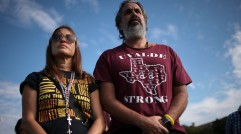Perseid Meteor Shower 2013: Dates, Time and Best Places to Watch
Skygazers rejoice! The 2013 Perseid meteor shower is less than a week away and will once again provide the perfect opportunity to look skyward as the universe provides us with its own unique fireworks display. Read on for the date and time, and the best places to watch the show.
The Perseid meteor shower happens once a year, and provides one of the most spectacular light shows in the night sky each year. In fact, it is widely regarded as the most impressive of all of the meteor showers.
"We have found that one meteor shower produces more fireballs than any other," Bill Cooke of NASA's Meteoroid Environment Office said in a statement. "It's the Perseid meteor shower, which peaks on August 12th and 13th."
The Perseid meteor shower occurs as Earth hurtles through a trail of dust and debris left by Comet Swift-Tuttle. Various meteors that have fallen away from the nucleus of the comet burn up in the Earth's atmosphere, providing the spectacular views. Swift-Tuttle's enormous 26 km nucleus is what makes the Perseid meteor shower so large and bright.
"The average peak magnitude for a Perseid observed by our cameras is -2.7; for the Geminids, it is -2," Cooke said. "So on average, Geminid fireballs are about a magnitude fainter than those in the Perseids."
Comet Swift-Tuttle passes through the inner solar system every 133.3 years -- the last time it did so was 1992. It is named after the two astronomers who first discovered it back in 1862, Lewis Swift and Horace Tuttle. The history behind the meteor trail it leaves behind, however, dates back much longer than that.
"The Perseids are also sometimes referred to as the 'tears of St Lawrence,' after the Catholic saint who was martyred on August 10th, 258 AD. The Perseids have been noted by Chinese astronomers as far back as 36 AD, when it was recorded that 'more than 100 meteors flew thither in the morning.' The annual nature of the shower was first described by Belgian astronomer Adolphe Quételet in 1835," reports David Dickinson of universetoday.com.
For best viewing of the Perseid meteor shower, try to look up sometime between the hours of 10:30 p.m. to 4:30 a.m. Also, it is advisable to get away from the city and find a more rural meteor watching location, as the light pollution from the city makes it hard to clearly see the night sky.
Subscribe to Latin Post!
Sign up for our free newsletter for the Latest coverage!













